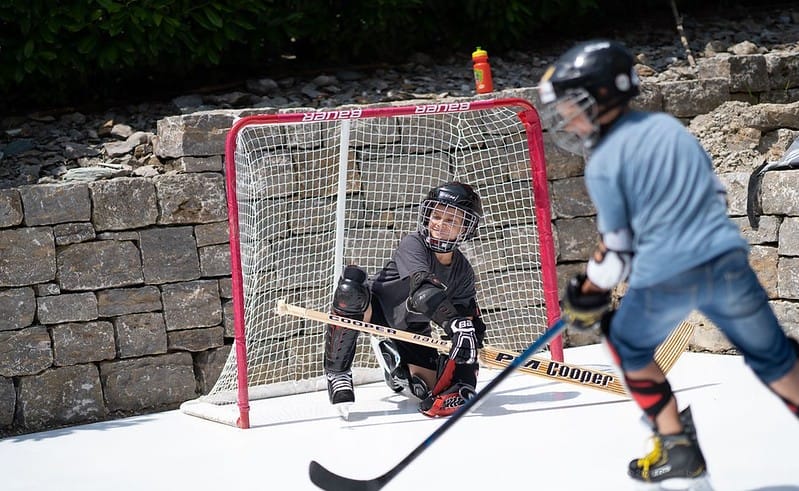As the winter season is in its full swing in many parts of the globe, backyard ice rinks are a favorite pastime. Creating and maintaining the ice rink surface can be quite a challenge. It is essential to keep the ice frozen, achieved with refrigeration systems.
We will give insight into the pros and cons of refrigeration systems for your backyard ice skating rink, discuss various options, and give you a brief DIY solution. Afterward, we will look at synthetic ice alternatives that can present a well-rounded alternative for all-year backyard ice skating fun.
How Ice Rink Refrigeration Systems Works
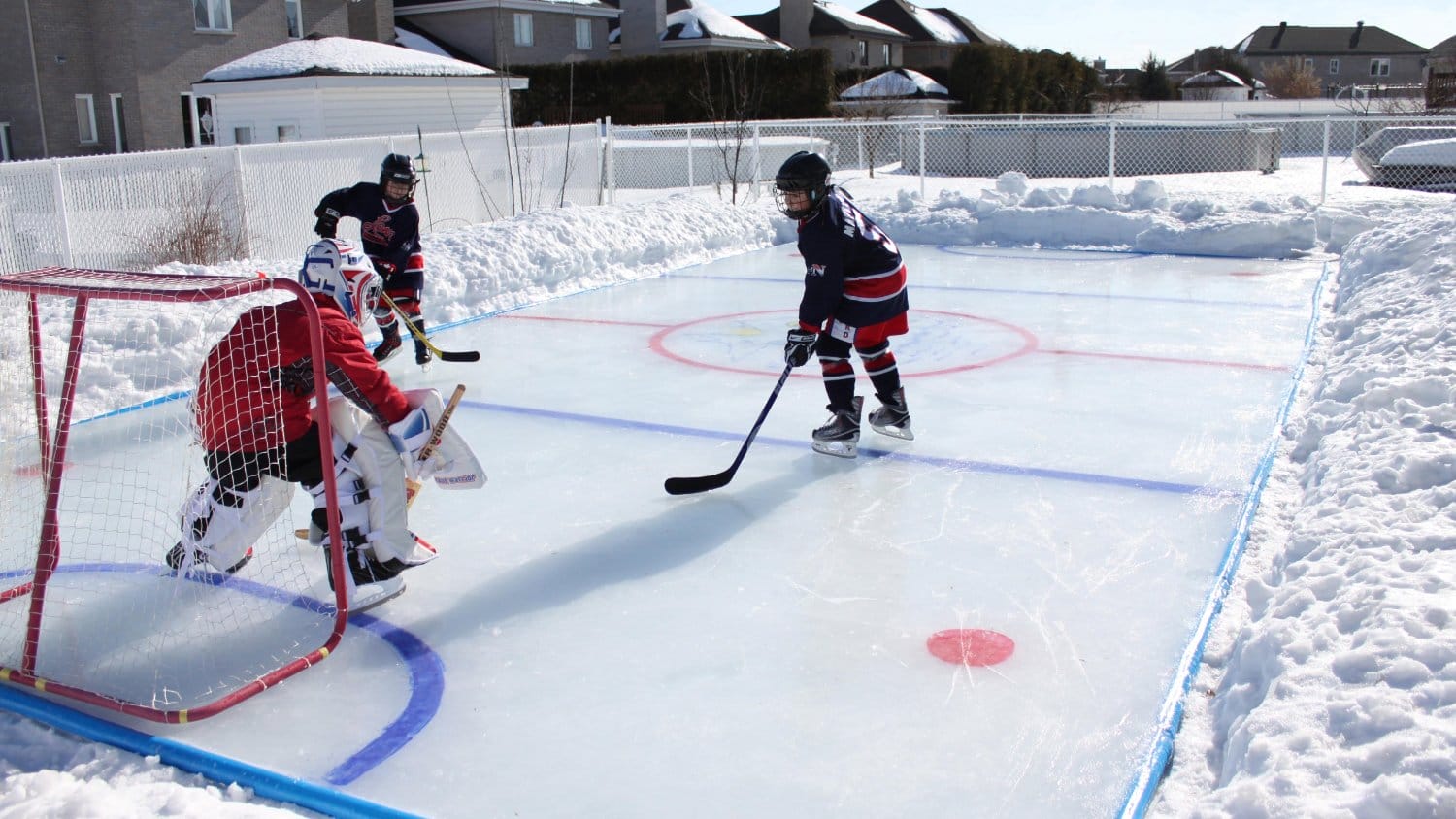
Ice rink refrigeration is the most essential element of maintaining a consistent and high-quality skating surface. Whether you’re planning to build a backyard rink or exploring the mechanics behind your favorite ice skating venue, understanding how ice rink refrigeration works is key.
For rink refrigeration systems to work, the heat is removed to keep the ice frozen. This is a summary of the process:
Compressors and Refrigerants
Refrigeration systems use compressors to compress and circulate refrigerants, which are substances with low boiling points. This compression causes the refrigerant to absorb heat from the surroundings.
Heat Absorption
As the refrigerant circulates through the system, it absorbs heat from the ice and the surrounding air. This heat absorption lowers the temperature of the ice, preventing it from melting.
Expansion and Release of Heat
The refrigerant then expands, releasing the absorbed heat into the atmosphere. This process repeats in a continuous cycle to maintain the desired ice temperature.
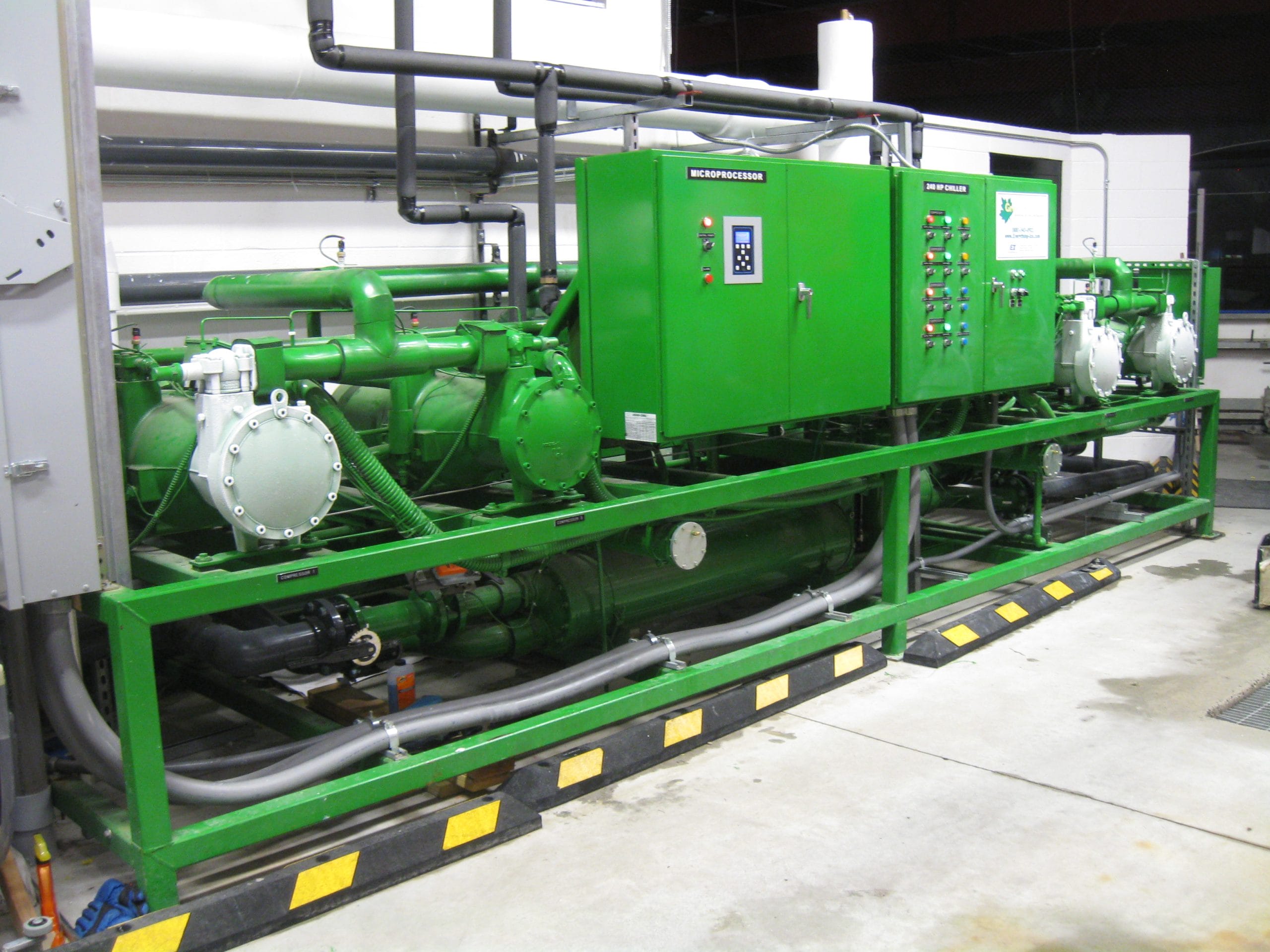
The Pros of Refrigeration Systems
- Consistent Ice Quality: Traditional ice rinks use refrigeration systems to ensure a smooth and dependable skating surface throughout the season. Its ability to maintain consistent ice quality is. a significant advantage.
- Extended Ice Skating Season: While natural ice represents a big uncertainty when it comes to a consistent ice skating season, refrigeration systems provide an ice surface even in mild winters. An ice rink chiller even gives you the opportunity to extend the ice skating season, allowing for longer-lasting fun and training.
- Better Control of Ice Temperature: Refrigeration systems provide precise control over the temperature of the ice. You can adjust it to suit your preferences, whether you want fast, cold ice for hockey or a milder surface for leisurely skating.
The Cons of Refrigeration Systems
- Initial Setup Costs: It’s important to know that setting up a refrigeration system can be expensive. This includes the cost of the equipment, installation, and any necessary permits. The initial investment may be higher than you expect.
- Maintenance and Energy Expenses: Refrigeration systems require regular maintenance and can consume a significant amount of energy. The associated costs for electricity and maintenance should be factored into your decision.
- Environmental Impact: The environmental impact caused by the energy consumption of refrigeration systems can be high, mainly if your energy source is not sustainable. Consider the ecological footprint of your refrigeration system when making your choice.
Refrigeration Options
Traditional Refrigeration Units
Traditional refrigeration units consist of compressors and refrigerants to maintain the ice. They offer reliability and consistent performance. But a quality refrigerated rink can be costly to install and operate.
Do-it-yourself (DIY) Solutions
DIY refrigeration systems are a more budget-friendly option. Building your system allows for customization and potential cost savings, but it requires time, effort, and some technical knowledge
Additionally to our blog post on DIY ice rink backyards, it might be useful to get a visual idea of the process. Coach Jeremy offers valuable insights through two instructional videos guiding you through the steps of setting up and ice rink and effectively filling it with water. You can also seek help in this facebook group about backyard ice rinks where you can exchange tips and seek advice.
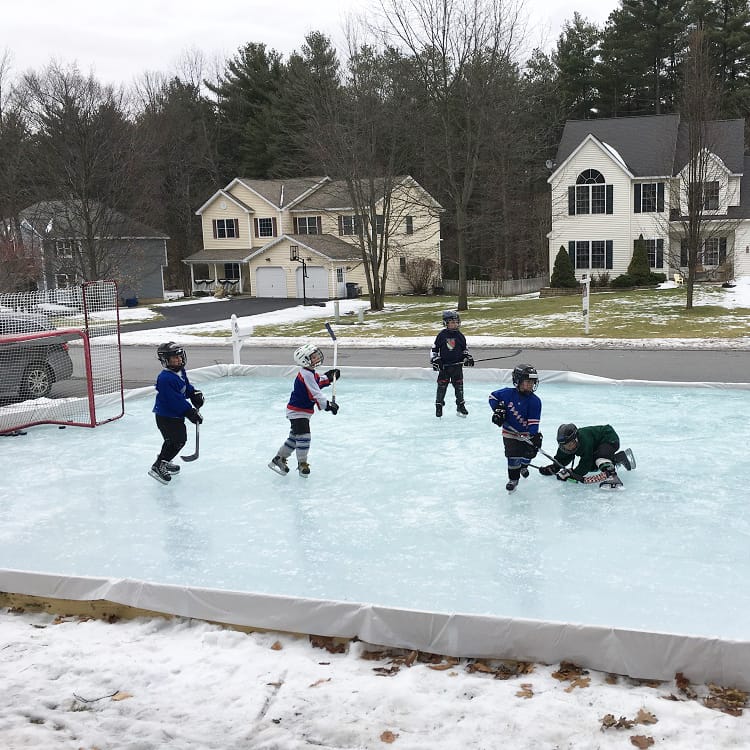
Synthetic Ice Alternatives
Synthetic ice is a convenient alternative to traditional refrigeration. It offers several benefits:
Low Maintenance and Cost-Effective
Synthetic ice requires minimal maintenance and no ongoing energy costs, making it a cost-effective option. It’s ready for use year-round without the worry about temperature fluctuations. That way you can extend the ice skating season to the entire year.
Not only can you reduce costs by opting for synthetic ice, but you also choose a more sustainable option. The savings in water and energy are substantial.
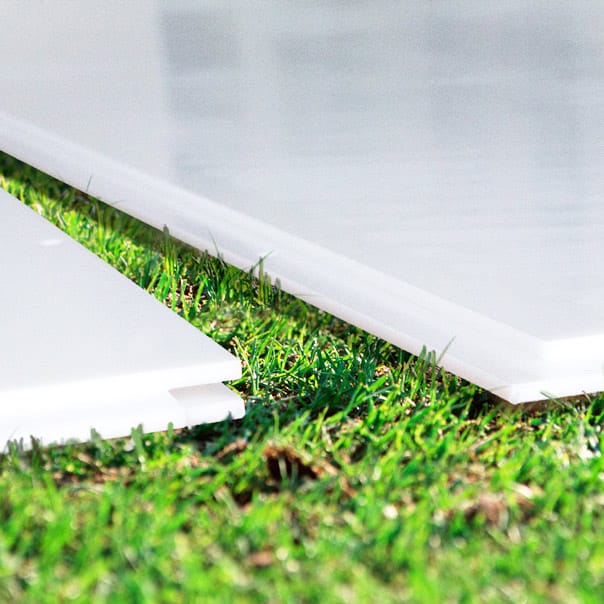
Flexibility with Installation
Synthetic ice provides a lot of flexibility regarding the rink placement. Use the panels for indoor ice rinks or place them outside. But it doesn’t end here: reach new heights for ice skating, literally! You can find Glice synthetic ice rinks on rooftops, beaches, shopping centers, and more.
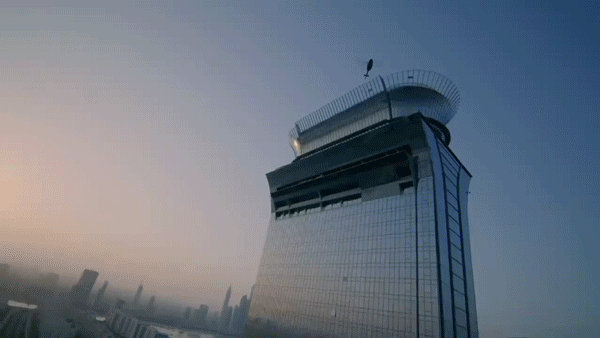
Differences in Skating Experience
Skating on synthetic ice varies a little from the experience on refrigerated ice rink, mainly in the beginning. This also depends on the chosen manufacturer. A few get close to the experience on electricity-powered ice and we explain the differences in this blog. After the initial adjustment, you will be amazed by how great the gliding is. A guaranteed great time with your family and friends! 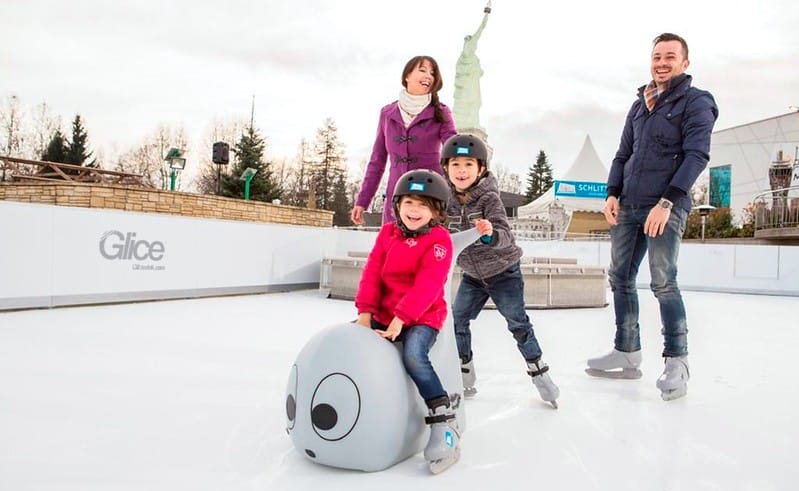
Thinking About Installing Your Own Refrigerated Backyard Ice Rink?
DIY Tips and Guidelines
If you’re considering a DIY ice rink refrigeration system, have a look at our blog explaining the setup of a backyard ice rink step by step.
Here are some basic steps to get you started:
- Research and Planning: Begin with thorough research and planning. Understand the materials and equipment you’ll need.
- Design and Layout: Create a design and layout for your rink. Place the rink boards and consider the refrigeration system’s placement. Place the rink lining or plan the layout of the synthetic ice panels. Also, remember to build a stable and smooth rink floor that can endure panels.
- Build the Refrigeration System: Assemble your system carefully, following guidelines and safety precautions. Ensure the system is appropriately insulated and secure.
- Maintenance: Regular maintenance is essential to keep your system running efficiently. Schedule routine checks and cleaning to avoid breakdowns.
- Enjoy Your Backyard Ice Rink: Once your refrigeration system is in place, enjoy the benefits of a consistent ice surface for extended skating enjoyment.
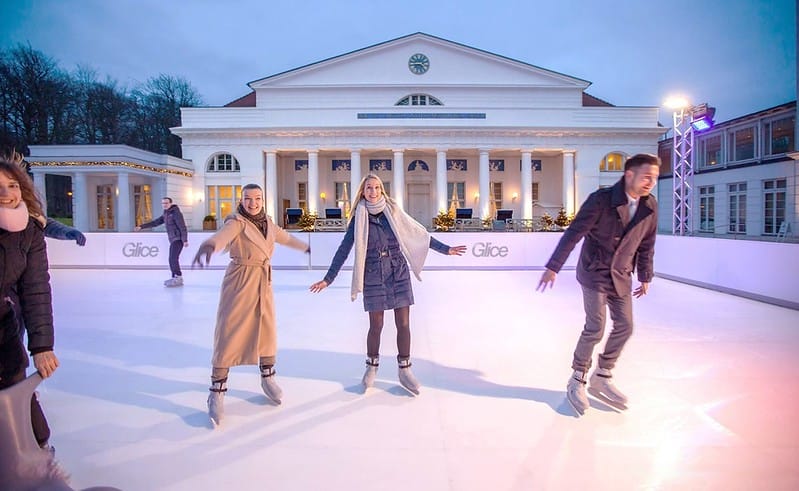
Conclusion
Backyard ice rinks are a fantastic way to enjoy the winter season, whether you opt for traditional refrigeration or synthetic ice alternatives. Consider your budget, preferences, and environmental concerns when making your choice. With the right approach, you can experience the joy of ice skating right in your backyard, no matter the weather.

